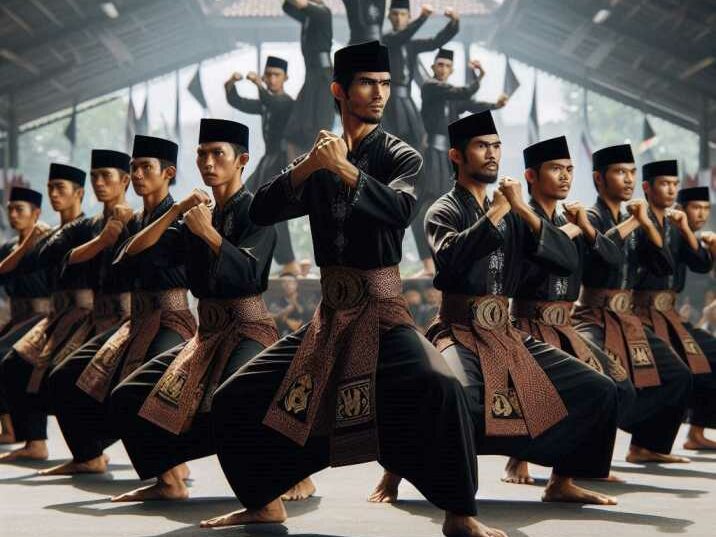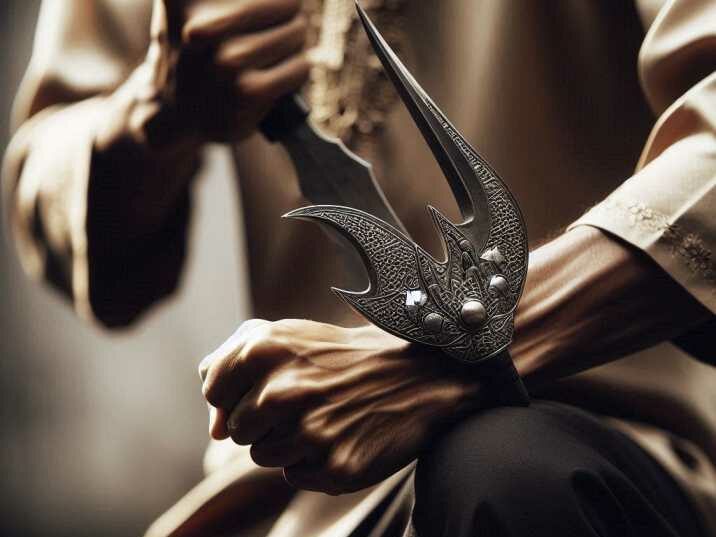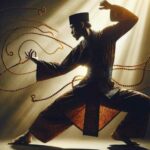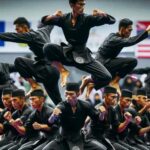Introduction
Table of Contents
Pencak Silat is a traditional martial art originating from Southeast Asia, primarily Indonesia, Malaysia, and the Philippines. It is known for its unique techniques, rich cultural heritage, and philosophical teachings. In this article, we’ll explore the core principles of Pencak Silat, making it easy to understand for readers of all ages. Whether you’re a martial arts enthusiast or just curious about this fascinating discipline, you’ll find valuable insights here.

What is Pencak Silat?
History
Pencak Silat has a long and storied history, believed to date back over a thousand years. It developed in the lush, archipelagic regions of Southeast Asia, where communities needed effective self-defense techniques.
Origin
The name “Pencak Silat” combines two Indonesian words: “Pencak,” referring to the performance aspect, and “Silat,” indicating the fighting techniques. This art form was influenced by local cultures and adapted to different environments, leading to a variety of styles and practices.
Significance
Pencak Silat is not just about fighting; it is a holistic practice that encompasses physical, mental, and spiritual growth. It teaches practitioners to harmonize with nature and their surroundings, emphasizing balance and adaptability.
Core Principles of Pencak Silat
Physical Techniques
Pencak Silat’s physical techniques are diverse and intricate, combining striking, grappling, and weaponry.
Stances
Stances are fundamental in Pencak Silat. They provide stability and readiness, enabling practitioners to move swiftly and effectively. Common stances include the horse stance, low stance, and high stance, each with specific applications in defense and attack.
Strikes
Striking techniques in Pencak Silat involve punches, kicks, elbows, and knees. These strikes are executed with precision and speed, aiming to disable an opponent quickly. Practitioners also learn to use their entire body in attacks, ensuring maximum impact.
Grappling
Grappling techniques include throws, locks, and sweeps. These moves are designed to control or subdue an opponent without causing serious harm. Pencak Silat emphasizes the importance of leverage and timing in grappling, allowing smaller individuals to overcome larger opponents.
Weapons
Traditional Pencak Silat includes training with various weapons, such as the kris (a wavy-edged dagger), karambit (a curved knife), and tongkat (a staff). Weapon training teaches practitioners precision, discipline, and respect for the tools they wield.

Mental Discipline
Mental discipline is a cornerstone of Pencak Silat, fostering inner strength and resilience.
Focus
Focus is essential in Pencak Silat. Practitioners must remain concentrated on their movements and surroundings, blocking out distractions to execute techniques effectively.
Self-Control
Self-control is crucial, as Pencak Silat teaches that true strength lies in restraint. Practitioners learn to manage their emotions, maintaining calmness in stressful situations.
Awareness
Awareness involves being mindful of one’s environment and potential threats. Pencak Silat practitioners develop heightened senses, enabling them to react quickly and appropriately to changes around them.
Philosophical Teachings
Pencak Silat is deeply rooted in philosophical teachings that promote personal growth and ethical behavior.
Respect
Respect is a fundamental value in Pencak Silat. Practitioners show respect to their instructors, fellow students, and even their opponents. This respect extends to nature and all forms of life.
Humility
Humility is about recognizing one’s strengths and weaknesses. Pencak Silat encourages practitioners to remain humble, acknowledging that there is always more to learn and improve.
Perseverance
Perseverance is key to mastering Pencak Silat. Practitioners are taught to persist through challenges and setbacks, understanding that progress comes through consistent effort and dedication.
Benefits of Pencak Silat
Physical Fitness
Pencak Silat provides a comprehensive workout, improving strength, flexibility, and endurance. The varied techniques ensure that all muscle groups are engaged.
Mental Strength
The mental discipline cultivated in Pencak Silat enhances concentration, emotional control, and stress management. Practitioners develop a resilient mindset that benefits them in all areas of life.
Cultural Appreciation
Practicing Pencak Silat fosters a deeper appreciation for Southeast Asian cultures and traditions. It offers a unique perspective on history, art, and philosophy, enriching the practitioner’s worldview.
Table of Information about Core Principles of Pencak Silat:
| Heading | Subheadings |
|---|---|
| What is Pencak Silat? | History, Origin, Significance |
| Core Principles of Pencak Silat | Physical Techniques, Mental Discipline, Philosophy |
| Physical Techniques | Stances, Strikes, Grappling, Weapons |
| Mental Discipline | Focus, Self-Control, Awareness |
| Philosophical Teachings | Respect, Humility, Perseverance |
| Benefits of Pencak Silat | Physical Fitness, Mental Strength, Cultural Appreciation |
Conclusion
Pencak Silat is more than just a martial art; it is a journey of personal growth and cultural exploration. By understanding the core principles of Pencak Silat, practitioners can achieve physical prowess, mental clarity, and a profound respect for life. Whether you are a beginner or an experienced martial artist, the lessons of Pencak Silat can offer valuable insights and benefits.
FAQs
1. What is Pencak Silat?
Pencak Silat is a traditional martial art from Southeast Asia, focusing on physical techniques, mental discipline, and philosophical teachings.
2. What are the main techniques in Pencak Silat?
The main techniques include striking, grappling, stances, and weaponry.
3. How does Pencak Silat promote mental discipline?
Pencak Silat promotes mental discipline through focus, self-control, and awareness training.
4. What philosophical values does Pencak Silat teach?
Pencak Silat teaches respect, humility, and perseverance.
5. What are the benefits of practicing Pencak Silat?
Benefits include improved physical fitness, mental strength, and cultural appreciation.


